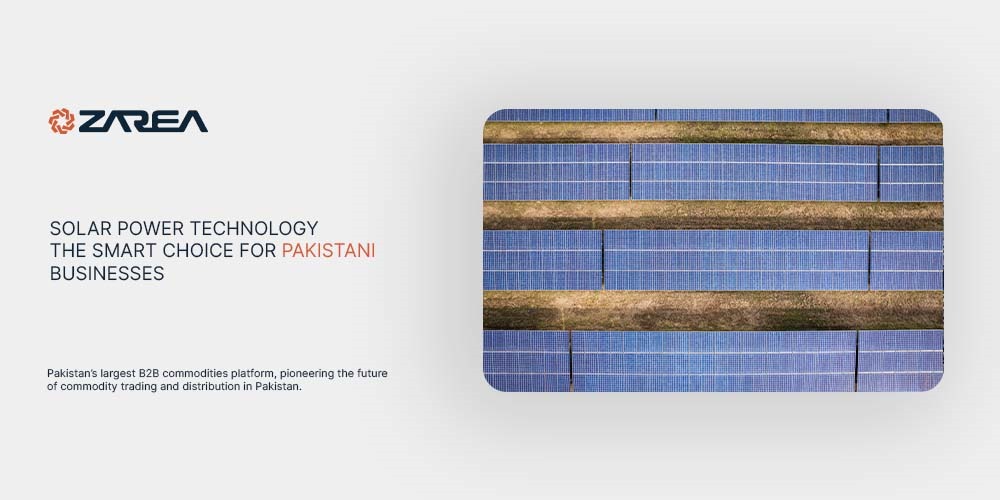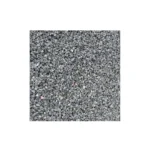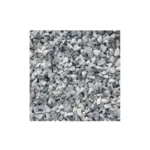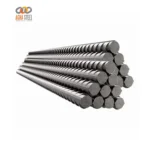Introduction – Solar is Smart Choice:
In the current fast-changing economic landscape, businesses in Pakistan are progressively embracing sustainable solar energy technologies and solutions. Solar energy is notable for its vast potential and accessibility. Zarea, as a leading in B2B e-commerce, emphasizes the significant role of renewable energy, especially solar panels, in supporting economic and environmental progress. This article discusses the crucial reasons why solar energy is beneficial for Pakistani businesses and showcases how Zarea facilitates effective utilization of solar power.
The Solar Power Technology – A Comprehensive Overview:
A renewable energy source capable of meeting global energy demands is solar energy. The amount of sunlight that hits the Earth’s surface in only ninety minutes could potentially fulfill the world’s energy demands for an entire year. Leveraging this abundant resource, solar technologies employ concentrating solar power (CSP) systems or photovoltaic (PV) panels to convert sunlight into electrical energy. This renewable energy can be utilized immediately or stored for future use in thermal storage and batteries.
Let’s explore the basics of solar energy, its technologies, and its transformative impact on global energy systems.
Understanding Solar Energy:
Solar radiation, an electromagnetic energy emitted by the sun, serves as the origin of solar energy. Although sunlight reaches all areas of the Earth, various locations receive varying intensities and durations of solar radiation. This radiation is captured by solar energy systems, which use it to generate heat or power.
Solar Power Technology:
- Photovoltaics (PV): The photovoltaic effect, which happens when sunlight hits a semiconductor material (commonly silicon), frees electrons that create an electric charge, is the foundation of photovoltaics (PV) panels. These devices are commonly utilized to produce energy on solar farms and rooftop installations.
- Concentrating Solar-Thermal Power (CSP): Concentrated Solar-Thermal Power (CSP): CSP technologies produce significant heat by directing sunlight into a small region utilizing mirrors or lenses. This heat can be preserved for future utilization or utilized to power turbines for energy production.
How Solar Power Works:
Photons from sunlight are absorbed by solar panels, which are usually composed of silicon and have a glass frame. A direct current (DC) is produced when these photons liberate electrons from the semiconductor material. This DC is subsequently transformed into alternating current (AC) by an inverter, which supplies electricity to residences, commercial buildings, and the grid.
Applications of Solar Energy:
- Residential Rooftop Systems: Provide electricity to residences while lowering dependency on traditional energy sources.
- Solar Farms: Solar farms are large facilities that provide enormous amounts of electricity for the grid.
- Satellites and Spacecraft: dependable solar-powered devices in orbit.
Solar Power and Sustainability:
Solar power is a renewable, clean, and limitless resource that generates no greenhouse gas emissions. Solar panels produce a low carbon footprint and last more than 25 years, while growing recycling initiatives help lessen their ecological effects.
The Evolution of Solar Power:
- Fires were lit by sunlight in the 7th century B.C.
- Mirrors were employed by the Greeks and Romans to capture solar energy around the third century B.C.
- Edmond Becquerel, a French physicist, made the discovery of the photovoltaic phenomenon in 1839.
- The first silicon-based solar cell that could power commonplace devices was created by Bell Laboratories in 1954.
Solar Power technology is being used to power everything from spacecraft to homes, demonstrating its potential and adaptability.
Key Insights into Solar Power:
- Solar Farms: Solar farms consist of vast collections of interconnected photovoltaic cells that deliver solar energy directly to the grid.
- Cloudy Days: On overcast days, solar panels continue to generate electricity, but their efficiency decreases since they rely on daylight instead of direct sunlight.
Global Leaders in Solar Energy:
As of 2022, China stands as the top producer of solar energy globally, with the United States, Japan, Germany, and India close behind. These nations are at the forefront of developing and utilizing renewable energy.
Integrating Solar Power into the Grid:
By 2035, nations globally, including the US and the UK, aim to reduce carbon emissions from their electrical networks. A vital element of these efforts is solar energy, offering sustainable and scalable solutions to the growing energy demands of the world.
The Future of Solar Energy:
Solar power is a viable route to environmental preservation and energy independence, thanks to developments in solar technologies and growing global usage. Unlocking solar energy’s full potential for future generations will need sustained research, innovation, and investment.
In a world that is working towards sustainability, solar energy is a bright example of advancement and potential.
The Rising Importance of Solar Power Technology in Pakistan:
Challenges in Energy Reliability: Frequent outages and high costs make solar an appealing alternative.
Untapped Solar Potential: Pakistan enjoys about 300 sunny days a year, offering substantial solar capacity that remains mostly unused.
Decreasing Energy Dependence: Solar solutions help businesses minimize reliance on unpredictable power grids and volatile energy prices.
Economic Benefits and Feasibility:
Return on Investment: Significant cost reductions in electricity expenses mean solar investments pay off within a few years.
Supportive Government Measures: Businesses benefit from fiscal incentives such as tax reliefs, subsidies, net metering, and lowered import duties on solar equipment.
Future Prospects and Current Pricing:
Sector Growth: Technological advances are expected to drive down costs and boost growth in the solar sector.
Zarea’s Competitive Pricing: We offer affordable solar solutions from top global manufacturers, ensuring great value.
Innovations and Trends in Solar Energy:
Technological Advancements
Efficiency Improvements: Recent innovations in photovoltaic technology enhance the efficiency and affordability of solar panels.
Solutions for Energy Continuity: Energy storage integrations ensure a stable power supply, even without sunlight.
Governmental Support and Policies:
Improvement of Subsidy: The government has increased the financial incentives offered to ensure wider adoption of solar technology among SMEs.
Beneficial Net Metering: Improved policies now allow the feeding of surplus power into the grid by businesses, thus making solar projects more financially viable.
Industry Transformation Through Solar Power:
Manufacturing Sector
- Reduced Diesel Dependence: Solar energy offers dependable power, reducing costs and enhancing production.
Agricultural Applications
- Efficient Irrigation: Solar-powered systems ensure uninterrupted water supply, boosting agricultural productivity.
Commercial Benefits
- Lower Operational Costs: Businesses save on high energy expenses incurred during prolonged operational hours.
Why Choose Solar Panels from Zarea?
- Tailored Business Solutions: We provide top-tier energy products designed to meet diverse business needs.
- Leading Brands in Our Portfolio: Our selection includes:
Solar Power Brands offered by Zarea:
- Longi Solar Panel: High efficiency and innovation.
- JA Solar Panel: Durable and robust performance.
- Canadian Solar Panel: Cost-effective and reliable.
- Trina Solar Panel: Eco-friendly and advanced.
- Jinko Solar Panel: Superior output and reliability.
- Astronergy Solar Panel: Cutting-edge manufacturing excellence.
If you want to buy or explore these options, click here.
Conclusion:
Choosing solar energy is a strategic, sustainable, and cost-effective decision for businesses in Pakistan. Zarea is committed to assisting this transition by providing an array of premium solar panels suited to diverse business requirements. Join us in embracing a sustainable energy future with Zarea, and propel your enterprise forward with the power of the sun. Solar energy is indeed a wise choice for the progressive Pakistani business landscape.
Explore more about how solar power is revolutionizing various industries in our detailed feature, “Future of Energy – How Solar Power is Transforming Industries in Pakistan,” available on Zarea.
FAQ’s:
What is the best technology for solar power?
Monocrystalline panels generally possess the highest efficiency and power output. They are capable of achieving efficiencies greater than 22% and generating more than 300 watts (W) of power capacity. Some even exceed 400 W. In contrast, polycrystalline solar panels typically have lower wattages and seldom go beyond 17% efficiency.
What is solar power?
Solar power harnesses solar energy and transforms it into electricity using solar panels, which can range from the size of a residential rooftop to extensive ‘solar farms’ covering vast areas of rural land. The two forms of energy harnessed from the sun for human utilization are thermal energy and electrical energy.
What are the four main types of solar energy technologies?
Learn more about the following solar technologies:
- Solar Photovoltaic Technology. Converts sunlight directly into electricity to power homes and businesses.
- Passive Solar Technology.
- Solar Water Heating.
- Solar Process Heat.
- concentrating solar energy.
What is the latest technology in solar energy?
Seven New Solar Panel Technologies Are Changing the Future and Increasing Efficiency:
- Developments in Perovskite Solar Cell Manufacturing.
- Technology for Bifacial Solar Panels Captures More Sunlight.
- The technology of solar panels is becoming lightweight and flexible.
- Using energy storage to maximise renewable energy.
What is the most common solar technology?
To harness it, two key technologies have been created:
- Photovoltaic solar technology employs solar panels to directly transform sunlight into energy. semiconductor.
- solar thermal method that captures the heat from sunlight. This heat is either utilized directly or converted.
































